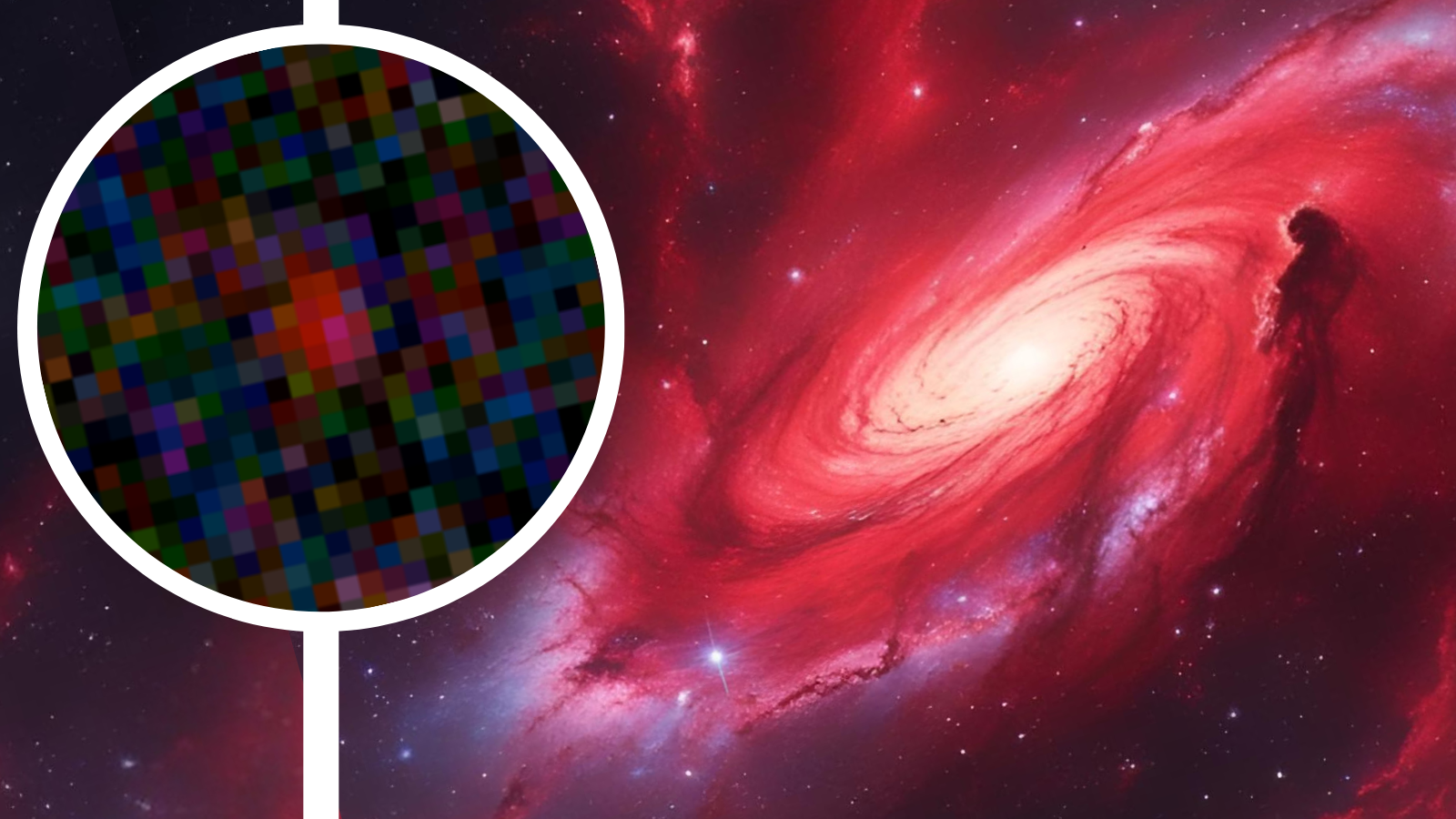Image of the Day 2019 Archive
Explore our Image of the Day 2019 Archives!
February 2019
A 'Wading' Galaxy Forms a Cosmic Tail
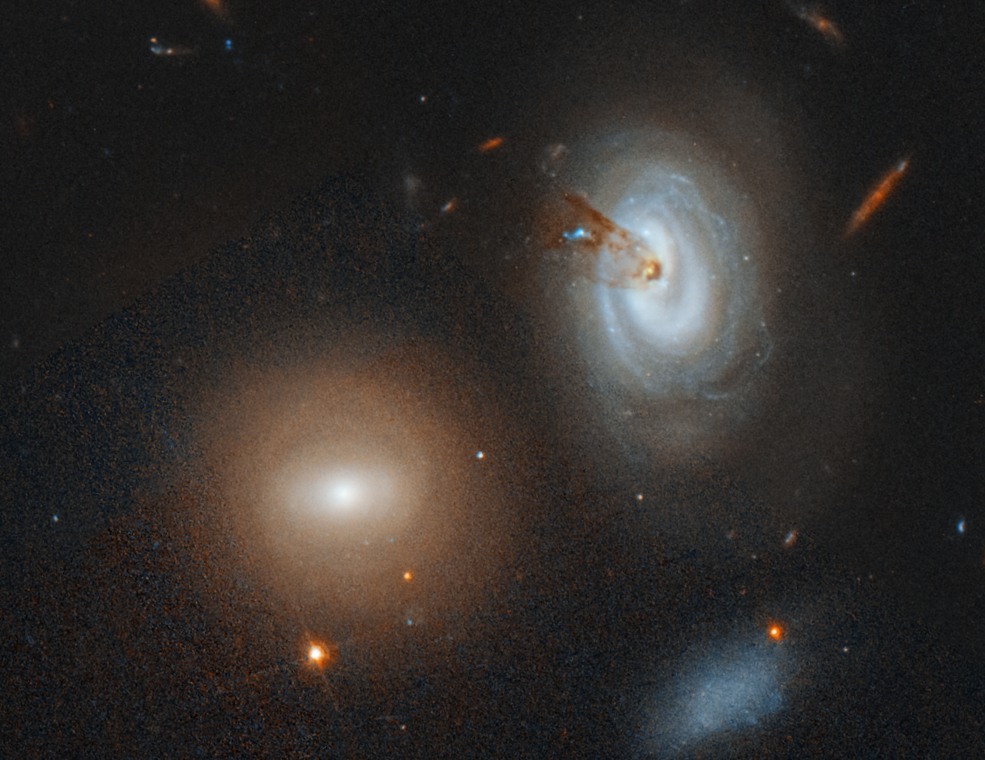
Friday, February 1, 2019: A tail emerges from the spiral galaxy D100 in this image that combines data from the Hubble Space Telescope's Advanced Camera for Surveys and the Subaru Telescope in Hawaii. The galaxy's tail is the product of a process called "ram-pressure stripping," in which gas and plasma in the interstellar medium pulls on the galaxy as it moves through it. It's "a little like the resistance one experiences when wading through deep water," Hubble officials wrote in the image release. — Hanneke Weitering
'Exo-Braking' Cubesat Deploys
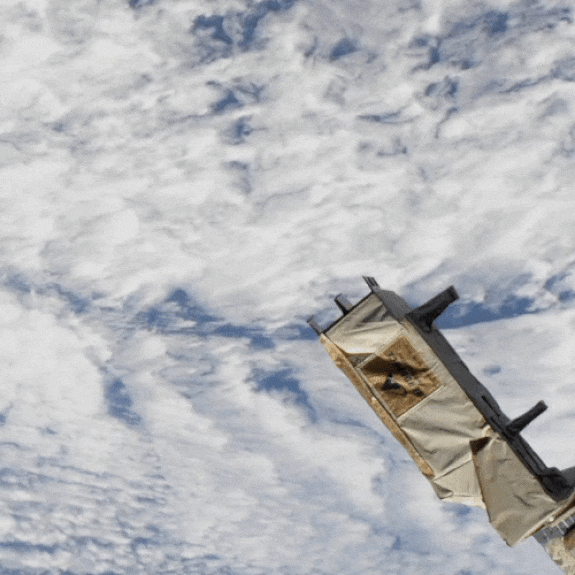
Monday, February 4, 2019: A cubesat is ejected from the Japanese Experiment Module at the International Space Station in this animated GIF. The small satellite, named TechEdSat-8, deployed on Thursday (Jan. 31) on a mission to test a new technology called "exo-braking," which would allow science payloads to return to Earth inside a cubesat. — Hanneke Weitering
A Stormy 'Oval' Swirls on Jupiter
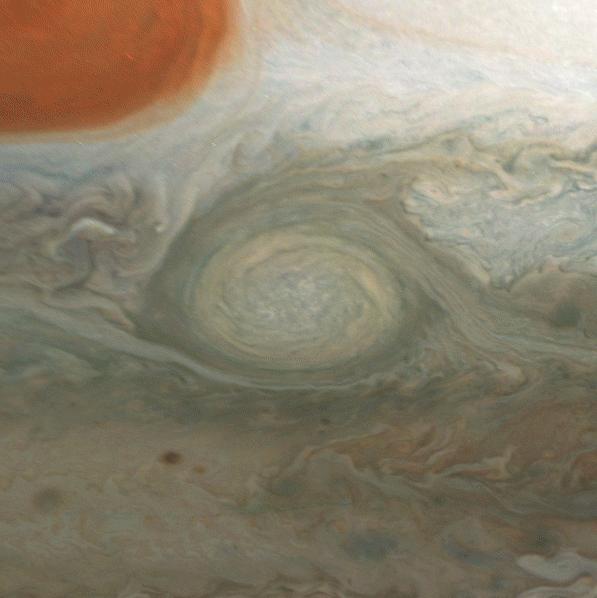
Tuesday, February 5, 2019: An enormous storm that spans twice the width of the continental U.S. swirls in Jupiter's southern hemisphere in this image from NASA's Juno spacecraft. The storm's counterclockwise rotation is evident in an animated view of the storm, which Juno imaged when it was between 15,400 miles (24,800 kilometers) and 60,700 miles (97,700 km) above the planet's cloud tops on Dec. 21, 2018. — Hanneke Weitering
Happy Moon Golf-iversary!
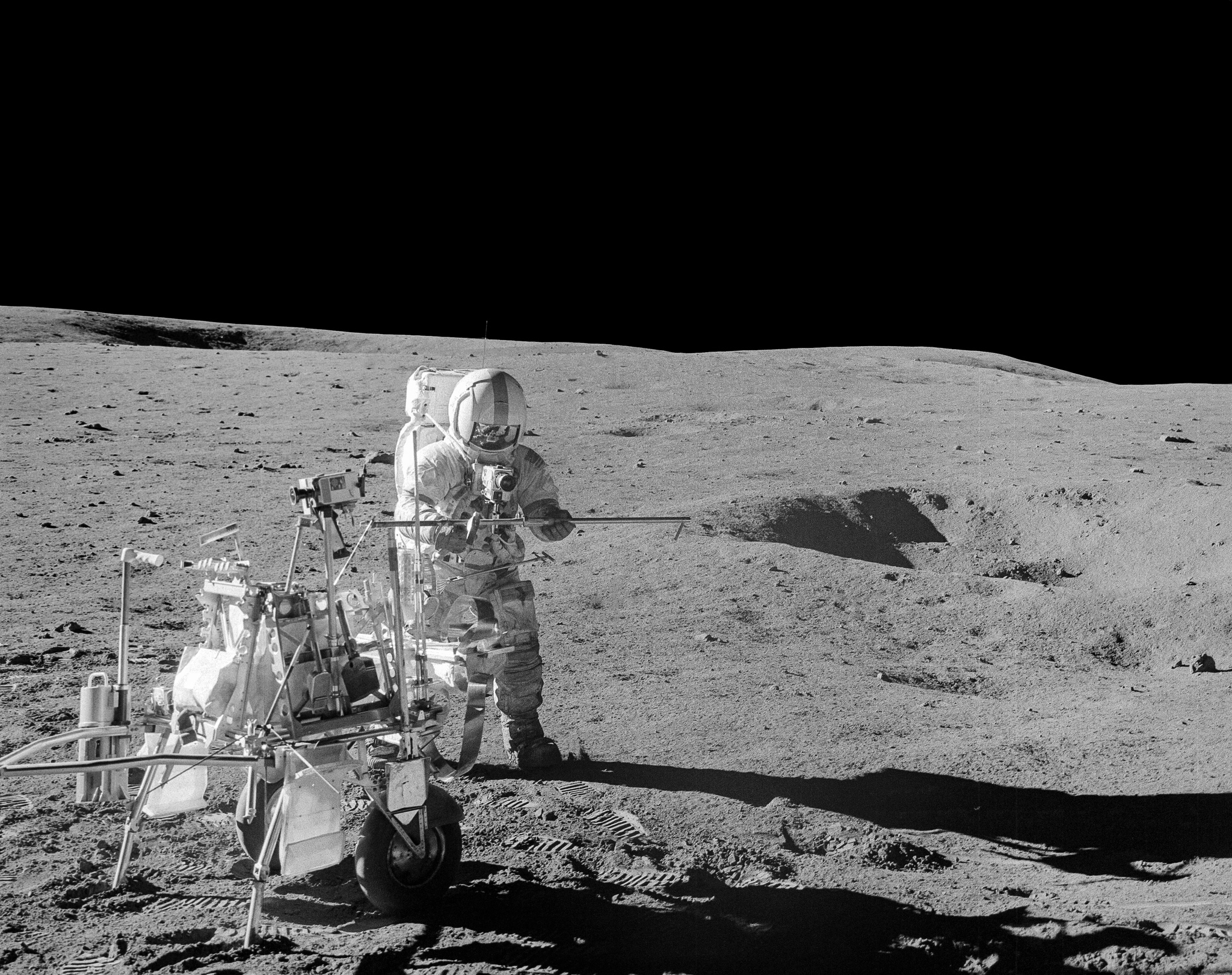
Wednesday, February 6, 2019: On this day in 1971, NASA astronaut Al Shepard became the first person to play golf on the moon during the Apollo 14 mission. Shepard had smuggled a six-iron head to the moon and attached it to a lunar excavation tool to create a makeshift golf club. He then used it to whack two golf balls. One ball went into a crater, and he claimed the second one kept going for "miles and miles." — Hanneke Weitering
A Martian River Delta
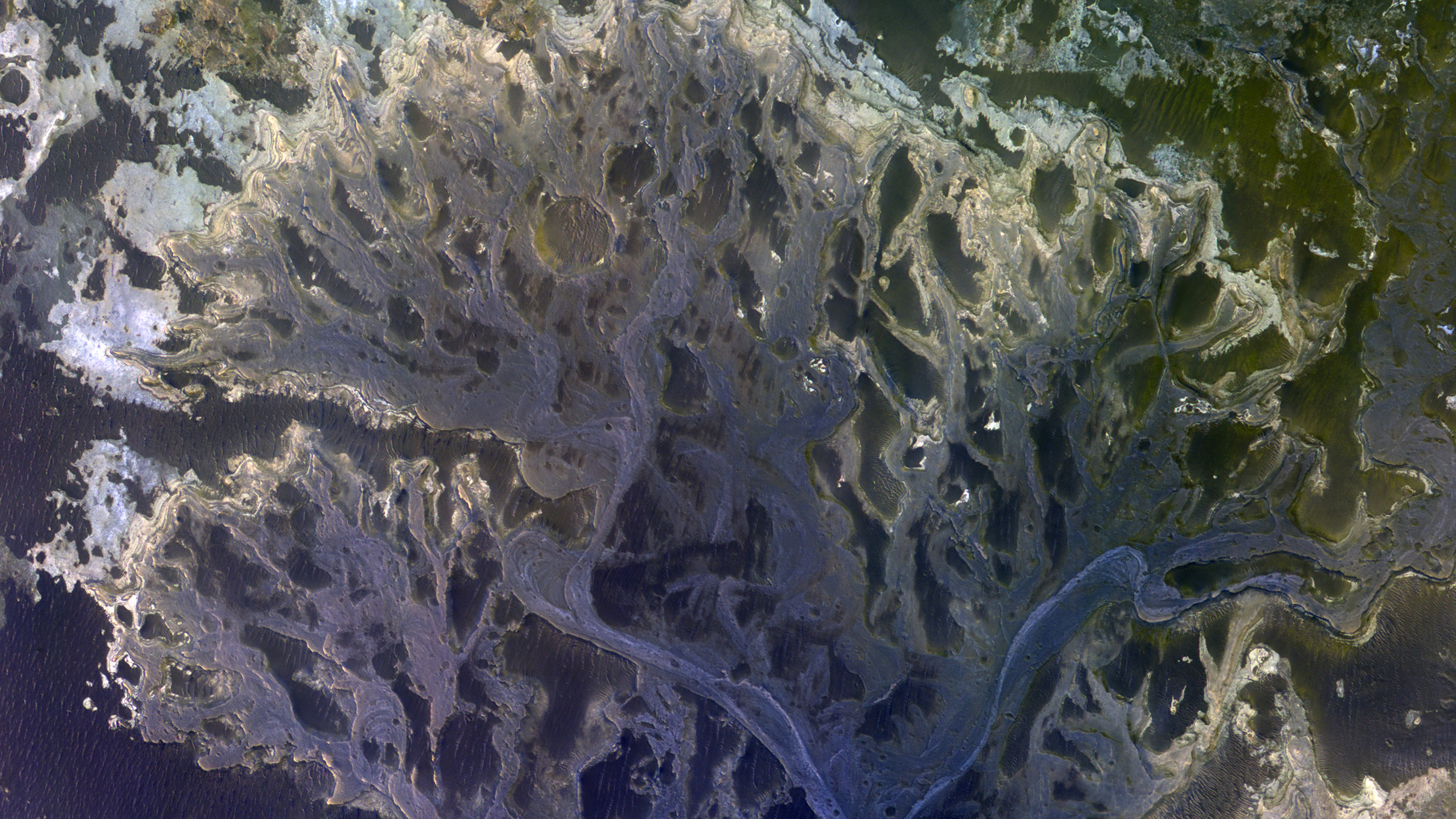
Thursday, February 7, 2019: A new view from the European Space Agency's ExoMars orbiter reveals an ancient river delta where water once flowed on Mars. Although liquid water has yet to be found on the Martian surface, geological features like this delta provide evidence that water played a major role in shaping the planet long ago. This 330-foot-wide (100 meters) fan-shaped feature is located in Eberswalde crater in the planet's southern hemisphere. (You can see an expanded view of the Eberswalde crater delta here.) — Hanneke Weitering
The Horsehead and Flame Nebulas
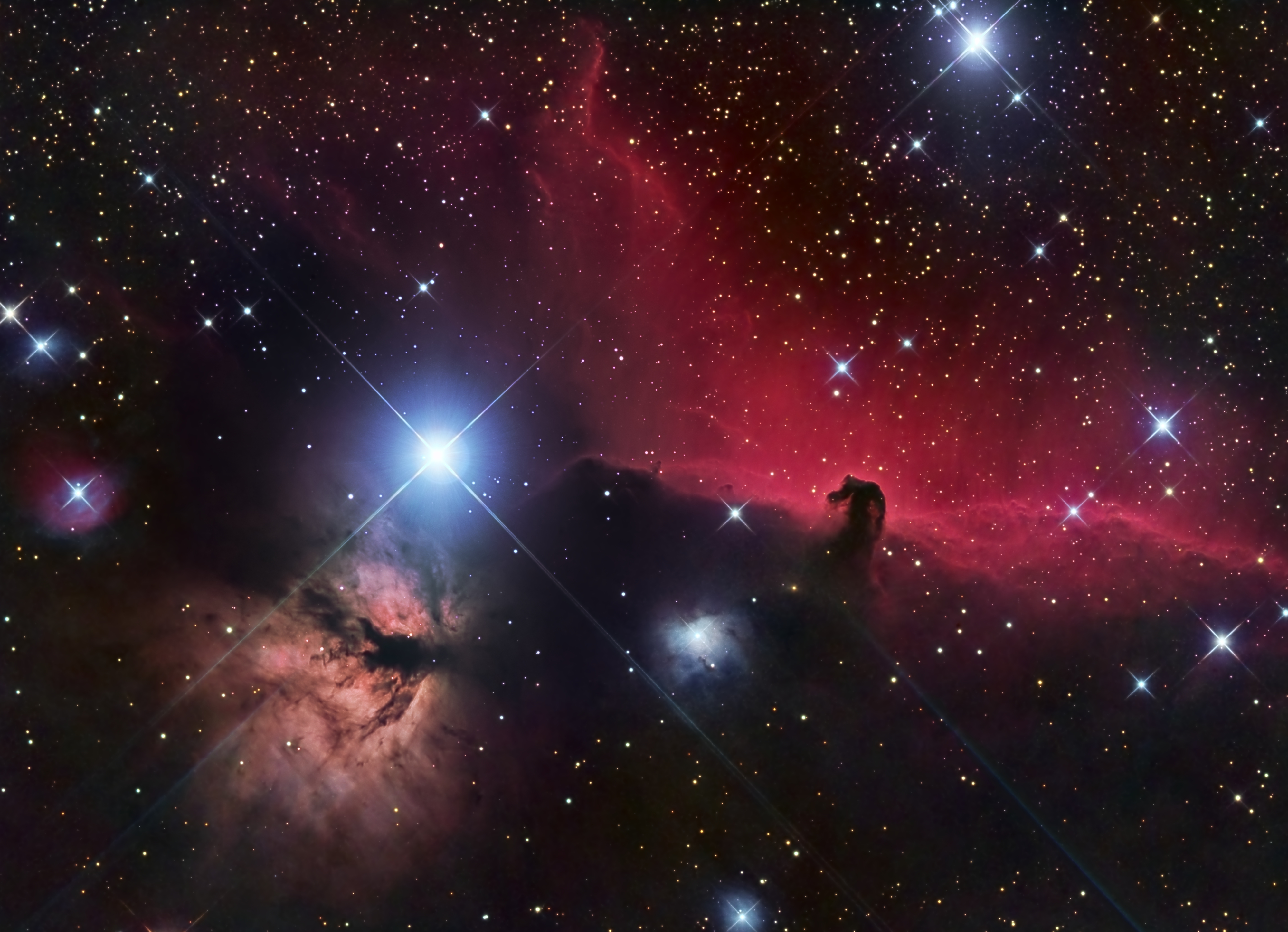
Friday, February 8, 2019: Saddled up in the Orion Molecular Cloud is a horse-shaped object known as the Horsehead Nebula. This equestrian shape is a dark absorption nebula where dense clouds of dust and gas make it difficult for any light to shine through it. Also known as Barnard 33, the nebula is located about 1,500 light-years away from Earth in the Orion constellation. To its left is a bright emission nebula named NGC 2024, or the Flame Nebula. — Hanneke Weitering
The Milky Way Meets Mars Over Alqueva
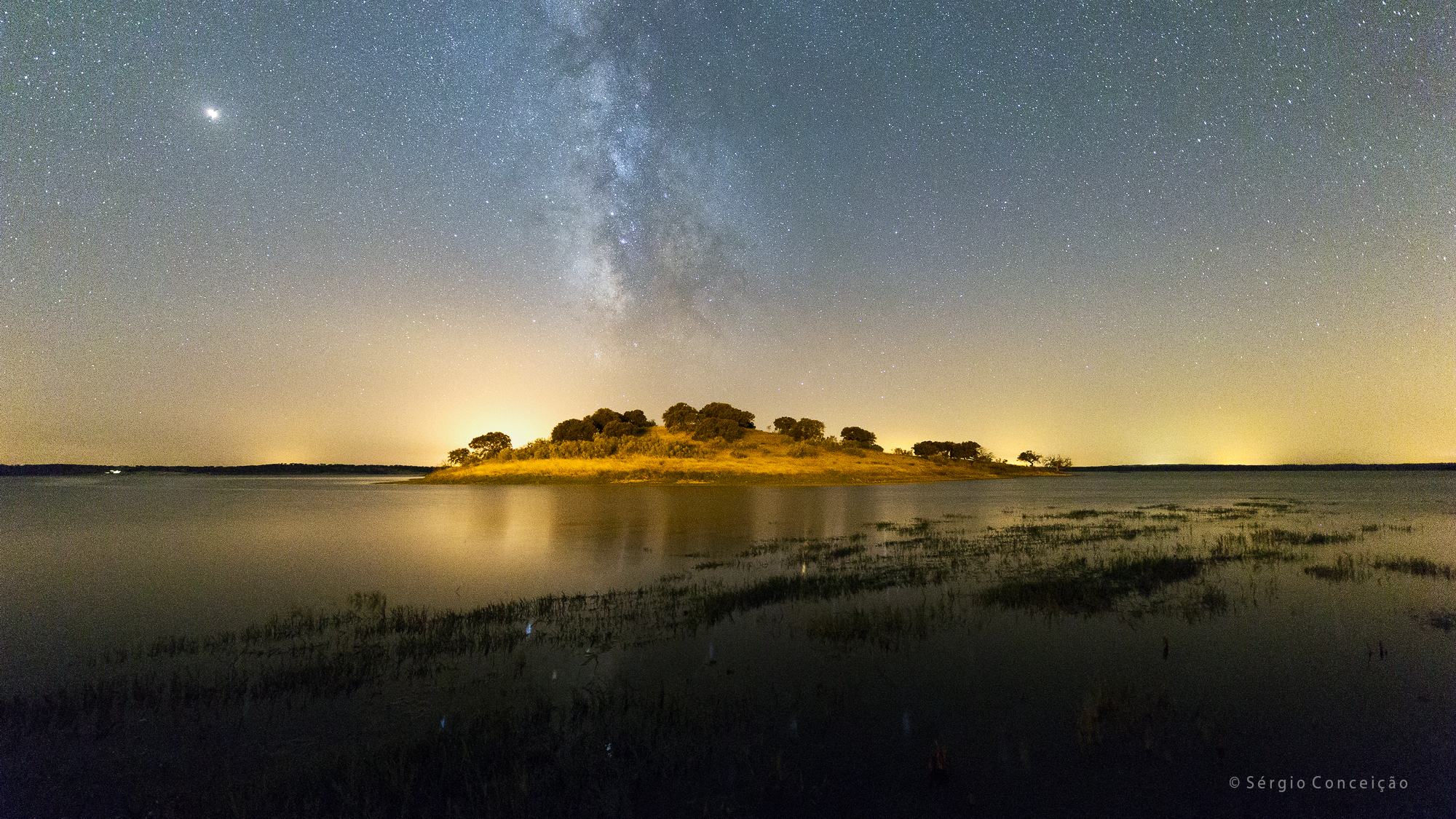
Monday, February 11, 2019: The Milky Way galaxy shimmers over Portugal's Lake Alqueva in this sunset view by astrophotographer Sérgio Conceição. To the left of the galaxy's dusty core, the brightest object in the sky is the planet Mars. — Hanneke Weitering
Get the Space.com Newsletter
Breaking space news, the latest updates on rocket launches, skywatching events and more!
Sayonara, Cygnus!
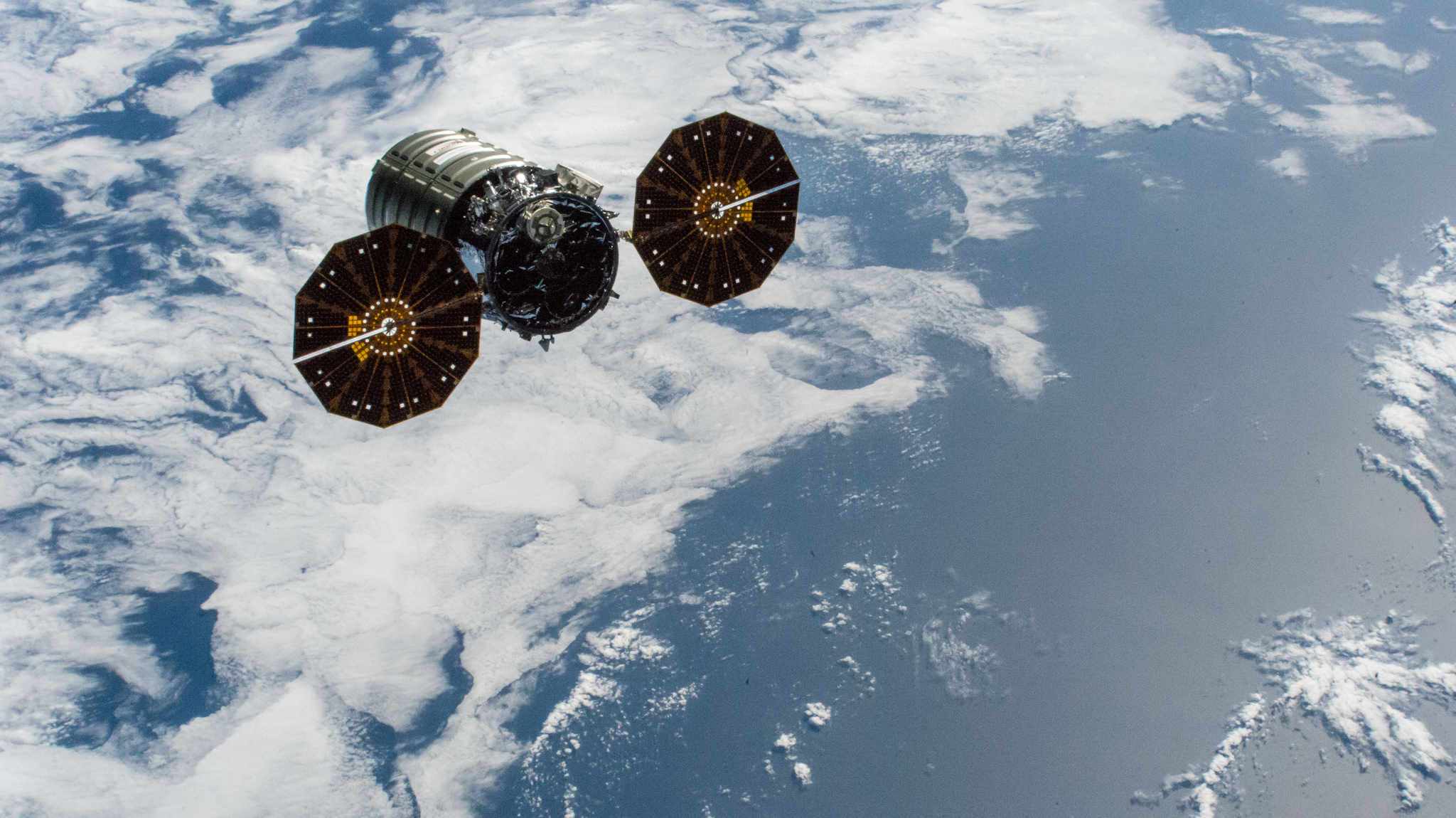
Tuesday, February 12, 2019: A Cygnus cargo spacecraft coasts above the clouds after departing the International Space Station on Friday (Feb. 8). Nicknamed the S.S. John Young after the late NASA astronaut, the cargo vessel launched to the space station on Nov. 17, 2018, carrying about 7,400 lbs. (3,400 kg) of supplies and science experiments for the crew of Expeditions 57 and 58. After unloading their shipment, the astronauts stuffed it full of non-recyclable trash and sent it off to burn up in Earth's atmosphere. — Hanneke Weitering
A Galaxy With Split Personalities
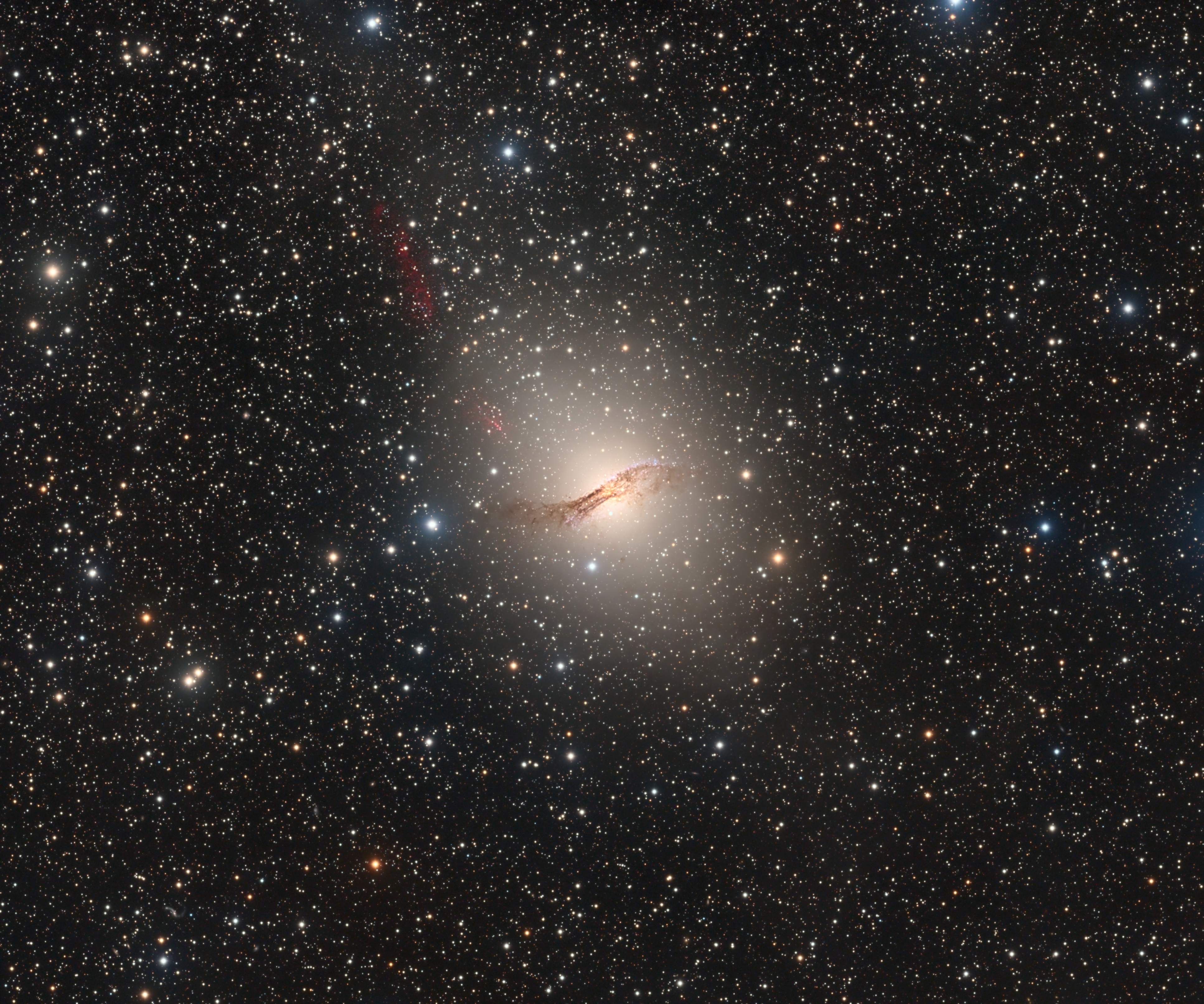
Wednesday, February 13, 2019: Is this galaxy shaped like a spiral, or is it more of an elliptical? Astronomers have long debated the answer to this question, because it seems to have properties of both. Known as Centaurus A, or NGC 5128, this strange galaxy is located in the southern constellation of Centaurus, and it lies somewhere between 10 and 16 million light-years away from Earth; its exact distance is another question that is still up for debate. Astrophotographer Ron Brecher created this glittering view of the galaxy using data acquired from an observatory in New South Wales, Australia. — Hanneke Weitering
A Cosmic Valentine

Thursday, February 14, 2019: Happy Valentine's Day from space! This endearing deep-space object is the Heart Nebula, or IC 1805. Located about 7,500 light-years from Earth in the constellation Cassiopeia, this glistening cloud of cosmic dust and gas was shaped by intense radiation coming from a cluster of stars at its core. Protruding from the cusp of the heart is the Fishhead Nebula. Astrophotographer Miguel Claro captured this view from the Dark Sky Alqueva Reserve in Portugal. — Hanneke Weitering
A Stellar Nursery in the Large Magellanic Cloud
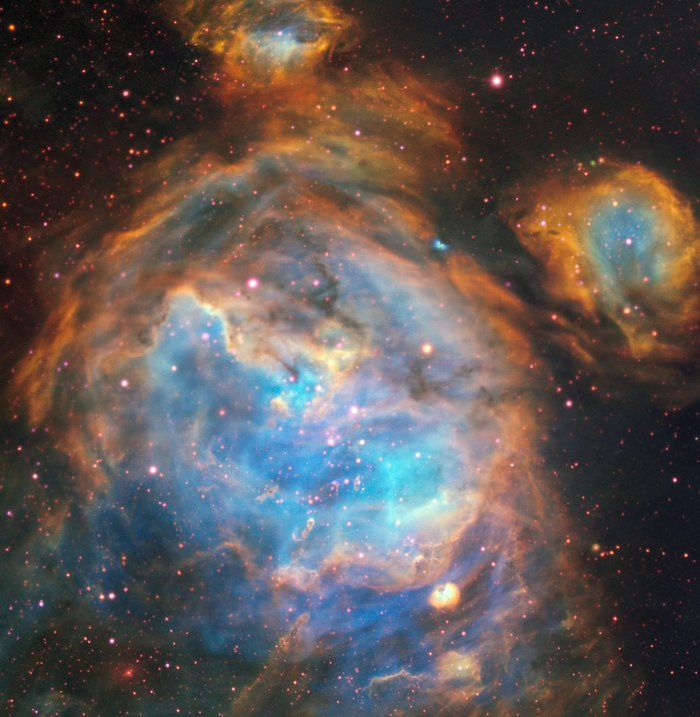
Friday, February 15, 2019: Inside the Large Magellanic Cloud, one of the Milky Way's cosmic neighbors, is a Mickey Mouse-shaped cloud of dust and gas that is riddled with bright, newborn stars. The European Southern Observatory's Very Large Telescope captured this view using its Multi Unit Spectroscopic Explorer instrument. — Hanneke Weitering
'Snow Moon' Seen from Space
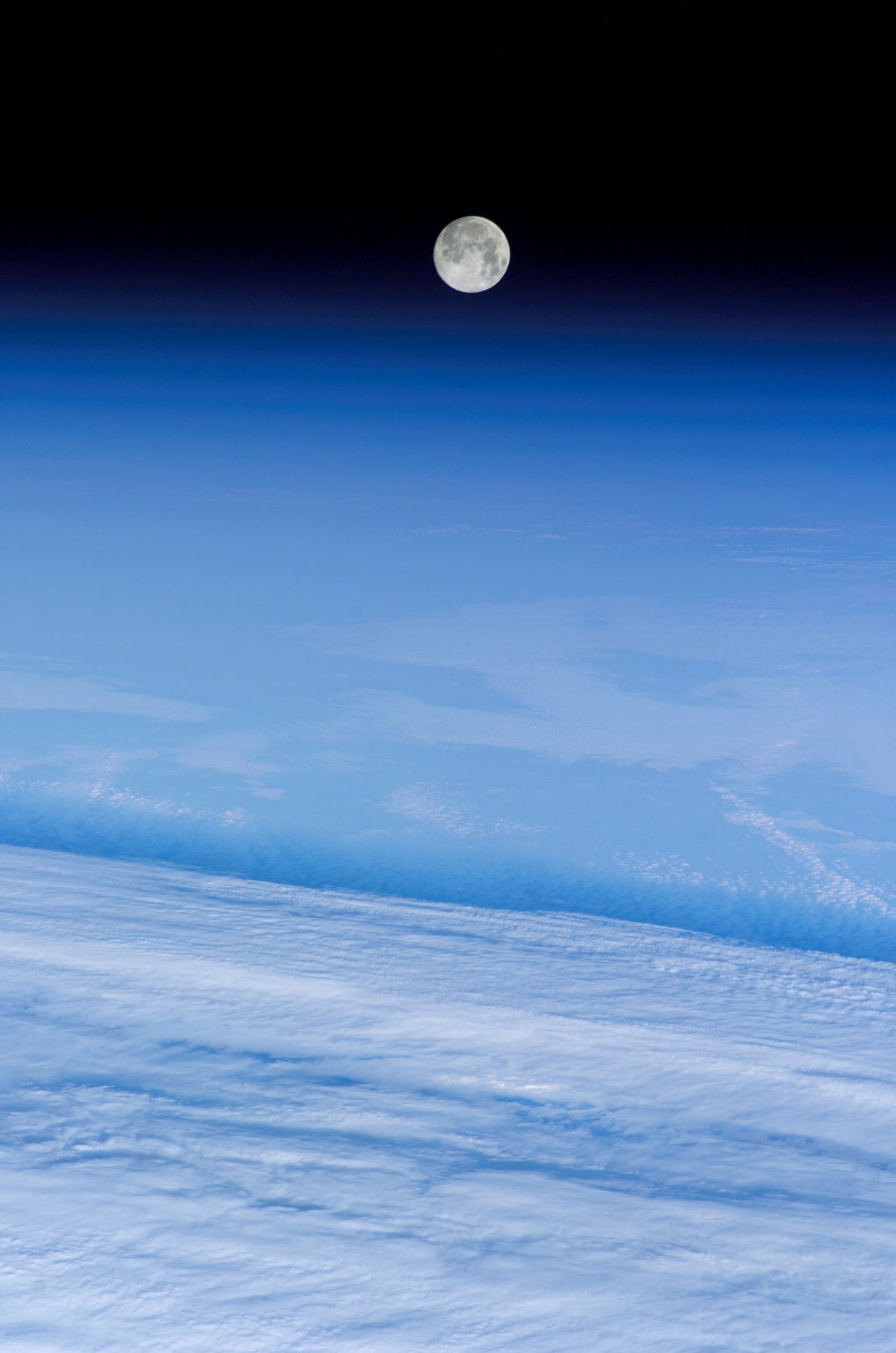
Tuesday, February 19, 2019: The full "Snow Moon" looms above Earth's fluffy cloud tops in this photo taken from the International Space Station on Feb. 12, 2016. Tonight the Snow Moon returns, but this year it is also a "supermoon," because the moon is at perigee, the closest point to Earth in its orbit. The so-called "Super Snow Moon" will be the biggest full moon of 2019. — Hanneke Weitering
'Mr. Hankey' Spotted on Jupiter
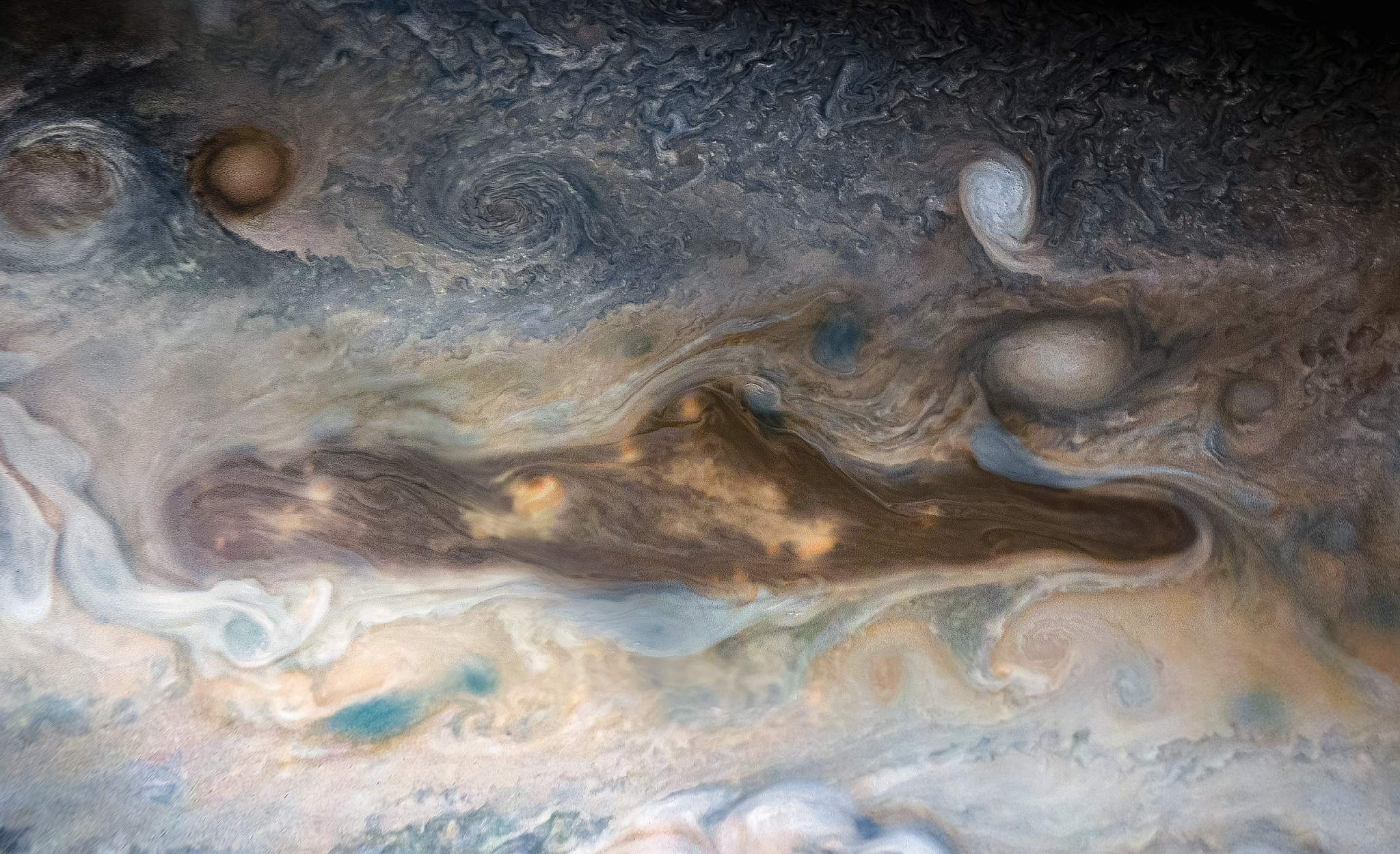
Wednesday, February 20, 2019: This long, brown smear spotted in Jupiter's cloud tops has earned the unofficial nickname "Mr. Hankey" due to its striking resemblance to a character from "South Park." NASA's Juno spacecraft captured this image of the feature, which is more formally known as a "brown barge." The elongated, oval-shaped cloud is a cyclonic region in Jupiter's South Equatorial Belt. Citizen scientist Kevin Gill processed this color-enhanced image using data collected by Juno during the spacecraft's 18th close flyby of the planet on Feb. 12. — Hanneke Weitering
New Evidence for Water on Ancient Mars

Thursday, February 21, 2019: A new view from the European Space Agency's Mars Express orbiter reveals ancient trenches and valleys on the Red Planet, which seem to indicate that the planet once had liquid water flowing on its surface. This 3D rendering of the terrain was created using data from the spacecraft's High Resolution Stereo Camera. — Hanneke Weitering
Liftoff!
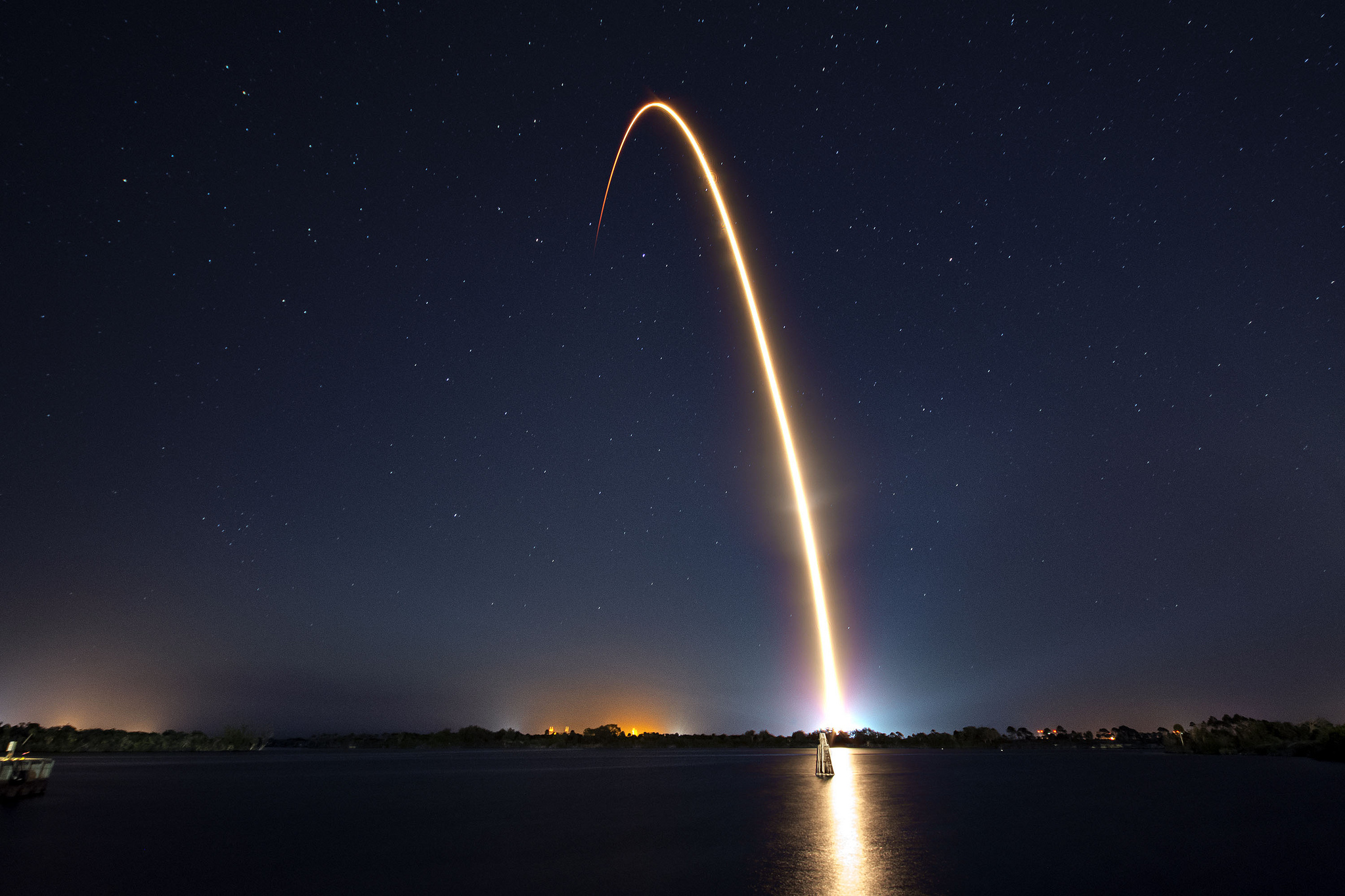
Friday, February 22, 2019: A SpaceX Falcon 9 rocket lifts off from Cape Canaveral Air Force Station in Florida to deliver Israel's first moon mission and two satellites into orbit in this long-exposure photo from SpaceX. The reusable rocket booster successfully launched and landed for a third time on Thursday (Feb. 21). — Hanneke Weitering
SPECULOOS Sees a Faint Spiral
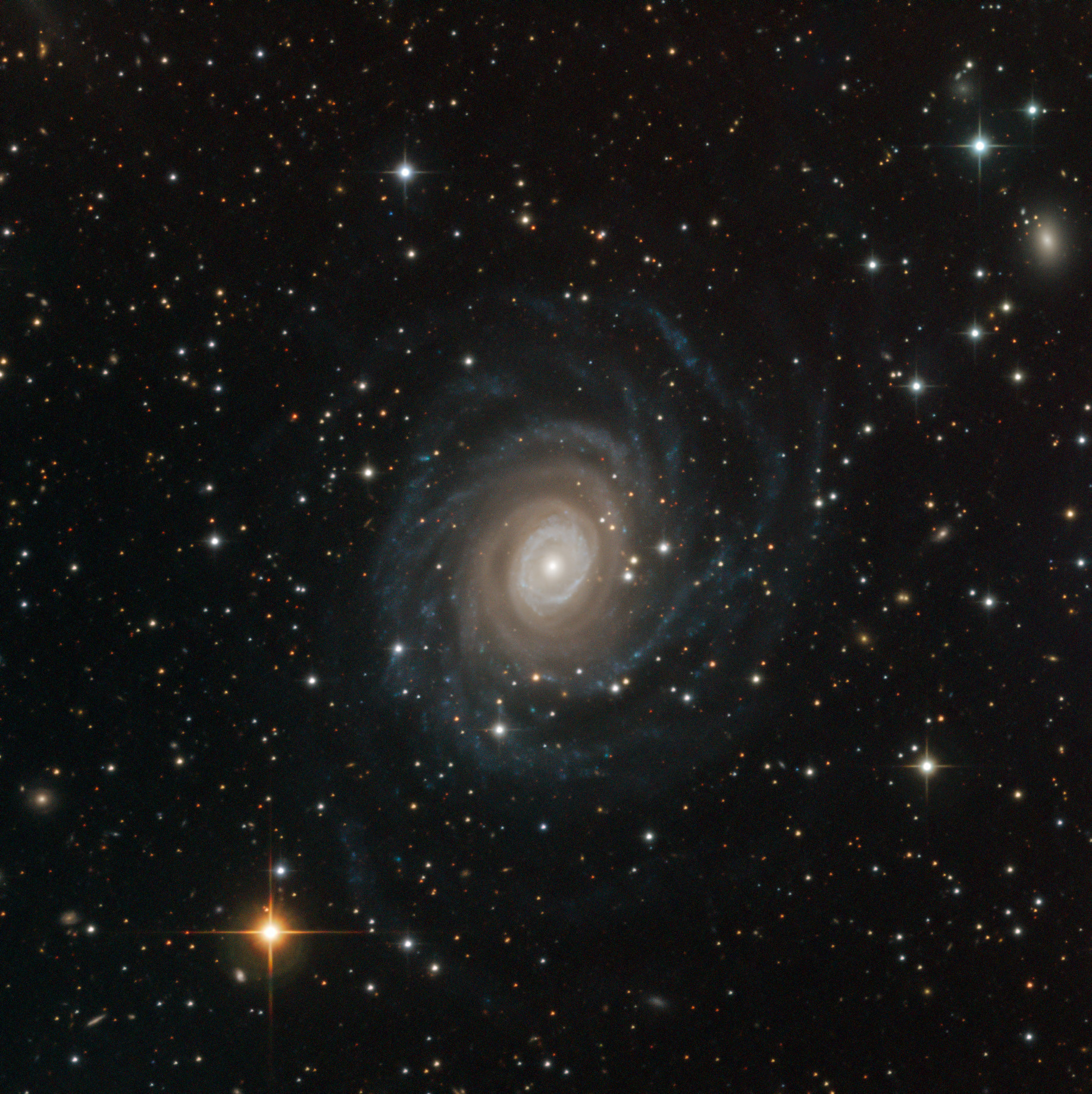
Monday, February 25, 2019: The wispy, spiral galaxy NGC 6902 glows faintly in deep space in this "first-light" image from the European Southern Observatory's new SPECULOOS Southern Observatory, an array of four telescopes in Chile’s Atacama desert. Although SPECULOOS was built to search for exoplanets around dim stars in our galactic neighborhood, one of its telescopes honed in on this spiral galaxy for its first observation. NGC 6902 is located about 120 million light-years from Earth in the constellation Sagittarius. "If this is what Ganymede can produce as its first observation of something it wasn’t even designed to image, we have a lot to look forward to," ESO officials said in a statement. — Hanneke Weitering
Canadarm2 Waves at Earth from Space
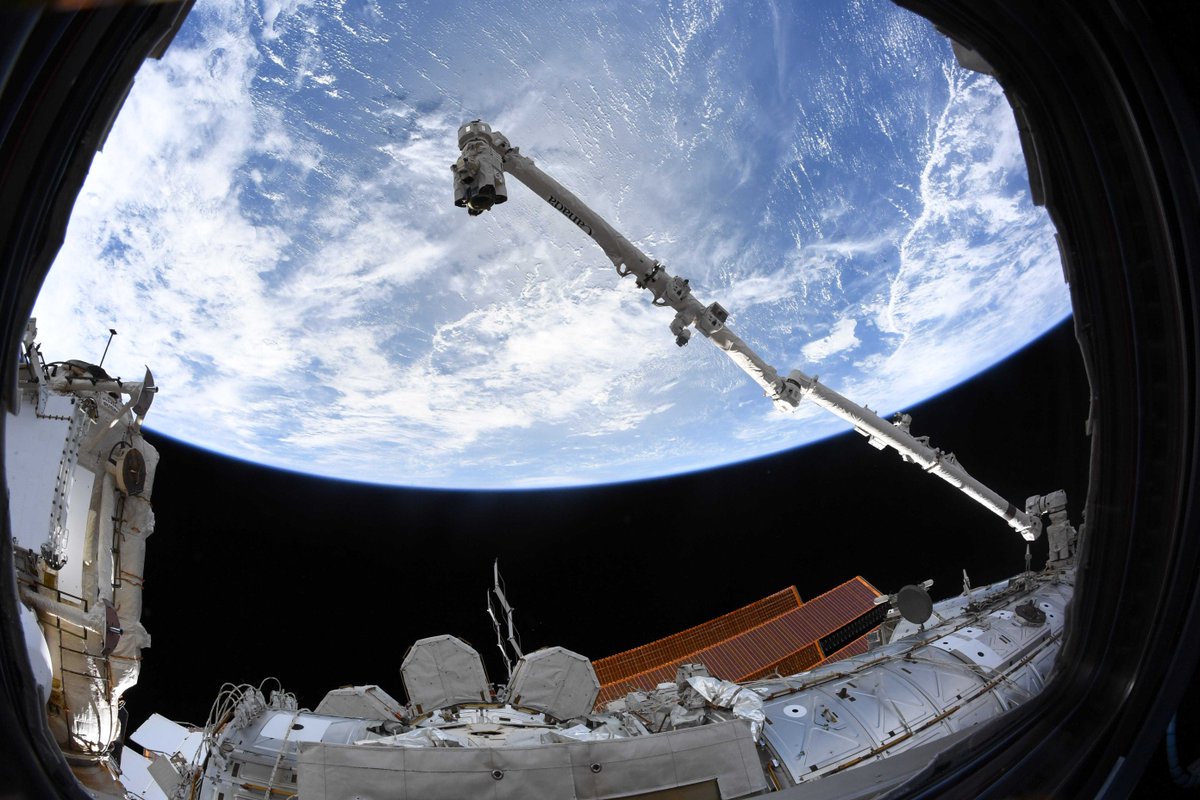
Tuesday, February 26, 2019: The International Space Station's Canadarm2 robotic arm stretches out into space in this photo by Canadian astronaut David Saint-Jacques. "#Canadarm2 is standing guard," Saint-Jacques tweeted on Friday (Feb. 22). The 58-foot-long (18 meters) robot is used to capture and release visiting spacecraft, and astronauts sometimes use it during spacewalks to get to hard-to-reach places outside the orbiting laboratory. — Hanneke Weitering
Jovian Art
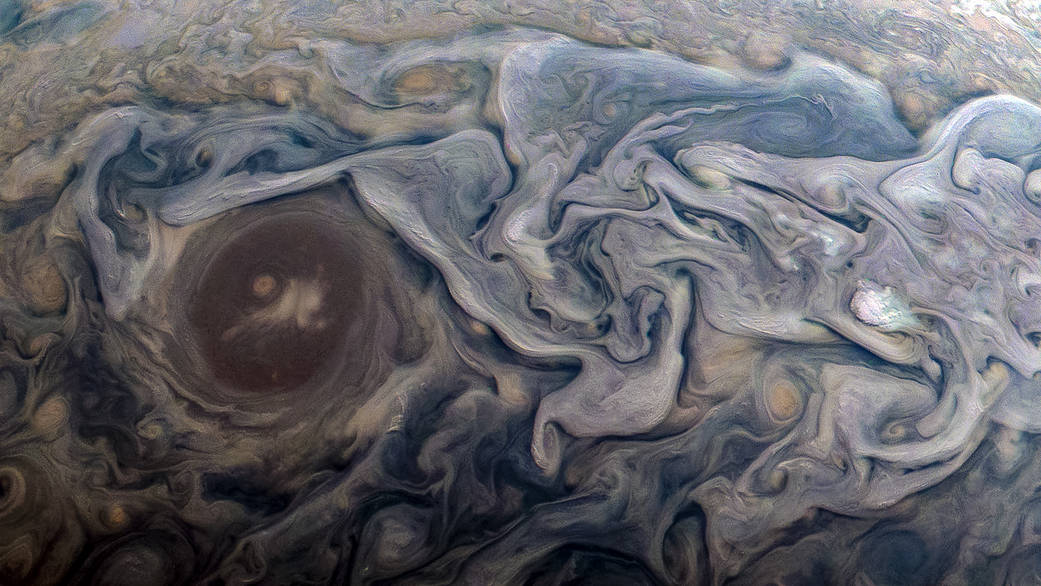
Wednesday, February 27, 2019: Jupiter's swirly atmosphere looks like a Van Gogh painting in this new image from NASA's Juno spacecraft. Citizen scientist Kevin Gill created this color-enhanced view using data that Juno collected during a close flyby of Jupiter on Feb. 12, when the spacecraft was about 8,000 miles (13,000 kilometers) above the planet's cloud tops. — Hanneke Weitering
Exclusive Eclipse Seen from Space
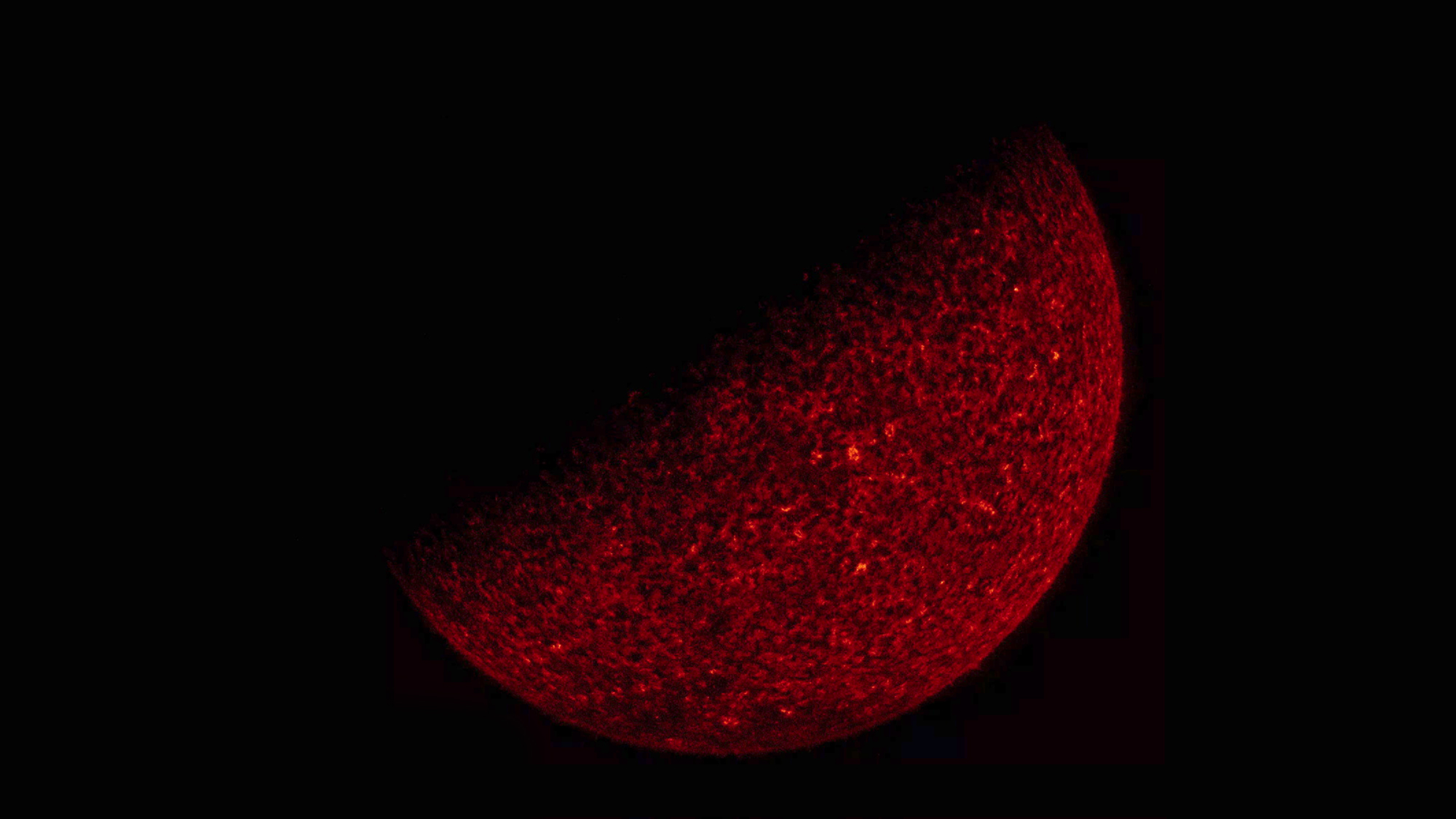
Thursday, February 28, 2019: While people on Earth only have the chance to see a few solar eclipses per year, NASA's Solar Dynamics Observatory (SDO) witnesses an eclipse all by itself every day during its very own eclipse season. The satellite's eclipse season lasts about three weeks and occurs twice a year around the equinoxes. Every day during those periods, the Earth partially blocks SDO's view of the sun for up to 72 minutes. The observatory captured this image of Earth obstructing the sun on Feb. 6. — Hanneke Weitering
Can't find the date you're looking for? It may have been a weekend or holiday, when we don't normally update our Image of the Day.
Click 'NEXT PAGE' below for March >
Join our Space Forums to keep talking space on the latest missions, night sky and more! And if you have a news tip, correction or comment, let us know at: community@space.com.

Space.com is the premier source of space exploration, innovation and astronomy news, chronicling (and celebrating) humanity's ongoing expansion across the final frontier. Originally founded in 1999, Space.com is, and always has been, the passion of writers and editors who are space fans and also trained journalists. Our current news team consists of Editor-in-Chief Tariq Malik; Editor Hanneke Weitering, Senior Space Writer Mike Wall; Senior Writer Meghan Bartels; Senior Writer Chelsea Gohd, Senior Writer Tereza Pultarova and Staff Writer Alexander Cox, focusing on e-commerce. Senior Producer Steve Spaleta oversees our space videos, with Diana Whitcroft as our Social Media Editor.
